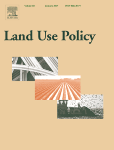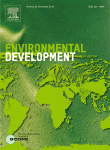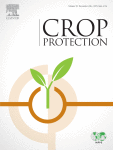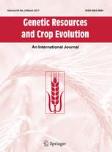Crop Centre in Print
Please find the latest journal publications from the Crop Centre listed below.
For a full list of publications from the School of Life Sciences please visit the Latest Journal Publications
John Clarkson Publications
First report of sclerotinia subarctica nom. prov. (Sclerotinia sp. 1) causing stem rot on turnip rape (Brassica rapa subsp. oleifera) in Norway
Brodal G, Warmington R, Grieu C, Ficke A, Clarkson JP
During August 2013, white-grayish lesions, typical of Sclerotinia stem rot, had developed around leaf axils on the stems of turnip rape ‘Pepita’ in a field at the NIBIO research station Apelsvoll in Oppland County, Norway. Sclerotina were collected from inside infected turnip rape stubble and from harvested seeds, surface sterilized, bisected, and placed onto potato dextrose agar (PDA). Although S. subarctica has been previously reported on wild hosts, this is the first report of the pathogen on a crop plant in Norway.
Plant Disease. February 2017
First report of Fusarium oxysporum causing a vascular wilt of statice (Limonium sinuatum) in the UK
Taylor, Andrew, Sims, Isabel, Jackson, Alison C. and Clarkson, John P
Statice (Limonium sinuatum) is grown commercially in many countries as a cut-flower crop. Fungal and oomycete pathogens reported for this plant include Colletotrichum, Botrytis, Cercospora, Rhizoctonia, and Peronospora (Moorman 2016). In the UK, 80% of all statice production (2.5 ha, value $800,000) is through a specialist grower in Lincolnshire. To our knowledge, this is the first report of Fusarium wilt of statice. Further work is required to establish the host range of this potentially new forma specialis.
Plant Disease. February 2017
Who is sowing our seeds? A systematic review of the use of plant genetic resources in research
Towards new sources of resistance to the currant-lettuce aphid (Nasonovia ribisnigri)
 Peter G. Walley, Gemma Hough, Jonathan D. Moore, John Carder, Marian Elliott, Andrew Mead, Julie Jones, Graham Teakle, Guy Barker, Vicky Buchanan-Wollaston, Paul Hand, David Pink, Rosemary Collier
Peter G. Walley, Gemma Hough, Jonathan D. Moore, John Carder, Marian Elliott, Andrew Mead, Julie Jones, Graham Teakle, Guy Barker, Vicky Buchanan-Wollaston, Paul Hand, David Pink, Rosemary Collier
Domesticated lettuce varieties encompass much morphological variation across a range of crop type groups, with large collections of cultivars and landrace accessions maintained in genebanks. Additional variation not captured during domestication, present in ancestral wild relatives, represents a potentially rich source of alleles that can deliver to sustainable crop production. However, these large collections are difficult and costly to screen for many agronomically important traits.
In this paper, we describe the generation of a diversity collection of 96 lettuce and wild species accessions that are amenable to routine phenotypic analysis and their genotypic characterization with a panel of 682 newly developed expressed sequence tag (EST)-linked KASP™ single nucleotide polymorphism (SNP) markers that are anchored to the draft Lactuca sativa genome assembly. To exemplify the utility of these resources, we screened the collection for putative sources of resistance to currant-lettuce aphid (Nasonovia ribisnigri) and carried out association analyses to look for potential SNPs linked to resistance.
Molecular Breeding, January 2017, 37:4
Mitigation of diffuse water pollution from agriculture in England and China, and the scope for policy transfer
 Smith, Laurence, Inman, Alex, Lai, Xin, Zhang, Haifang, Fanqiao, Meng, Jianbin, Zhou, Burke, Sean, Rahn, C. (Clive), Siciliano, Giusippina, Haygarth, Philip M., Bellarby, Jessica and Surridge, Ben
Smith, Laurence, Inman, Alex, Lai, Xin, Zhang, Haifang, Fanqiao, Meng, Jianbin, Zhou, Burke, Sean, Rahn, C. (Clive), Siciliano, Giusippina, Haygarth, Philip M., Bellarby, Jessica and Surridge, Ben
This paper evaluates the existing policy frameworks for mitigation of diffuse water pollution from agriculture (DWPA) in England and China. With reference to a conceptual model of the process of policy transfer or international lesson drawing, and possible constraints to this, it assesses whether and how China can draw lessons to improve current policy from the supra-national and national provisions of the EU and a member state that by 2016 had comprehensively implemented EU agricultural and environmental policy. DWPA is first analysed as a public policy challenge to inform specification of a generic framework for its mitigation. The current policy frameworks for mitigation of DWPA in England and China are evaluated, and their potential for improvement is assessed. A number of barriers to lesson drawing for regulation, incentive payments schemes and advice provision are diagnosed. These barriers are potentially least in relation to advice provision and its use to promote voluntary action by farmers. Given its structure and capabilities the public agricultural extension system in China is also recognised as a key resource. A focus on three policy approaches to mitigate DWPA in China is recommended: i) targeted regulation to a ‘reference level’ of large intensive livestock, and ultimately other large commercial farms; ii) strategic use of incentive payment schemes to protect water resources from DWPA; and iii) re-orientation of the ethos and modalities of operation of the extension system, informed by international lesson drawing, with the aim of rebalancing farm productivity and environmental protection.
Strategies for sustainable nutrient management : insights from a mixed natural and social science analysis of Chinese crop production systems
 Bellarby, J., Siciliano, G., Smith, L. E. D., Xin, L., Zhou, J., Liu, K., Jie, L., Meng, F., Inman, A., Rahn, C. (Clive), Surridge, B. and Haygarth, P.M
Bellarby, J., Siciliano, G., Smith, L. E. D., Xin, L., Zhou, J., Liu, K., Jie, L., Meng, F., Inman, A., Rahn, C. (Clive), Surridge, B. and Haygarth, P.M
In China intensification of agriculture has been achieved at a cost to the environment.
The extension service is the leading public resource to address this but remains focused by a historic national ethos for food security, production and economic growth, whilst its administrative structure is hierarchical, slow to change and lacking in relevant functional integration.
Investigation of three case study farming systems identifies how to rebalance productivity with stewardship of farm inputs and natural resources. Substance flow analyses for each case demonstrate that crop nutrient management can potentially be improved to reduce environmental risk without yield loss. Complementary stakeholder surveys and social network analyses identify barriers to change relating to the knowledge, attitudes, practices and operational constraints of farmers and extension agents, and to the structure and performance of agricultural knowledge and innovation systems.
This combination of analyses offers an original synthesis of needs, planning priorities and strategies.
Interface of the environment and occurrence of Botrytis cinerea in pre-symptomatic tomato crops

Alison Wakeham, Allen Langton, Steve Adams, Roy Kennedy
Procedures are reported that enable conidial spore concentrations of the ubiquitous and necrotrophic fungus, Botrytis cinerea, to be monitored in glasshouse tomato production ahead of visible symptom development.
Integrating bio-aerosol sampling using a portable air sampler and immunological procedures enabled inoculum availability to be quantified within hours to assist the prediction of disease occurrence.
No obvious relationship was observed between spore concentration and the internal glasshouse temperature and relative humidity. However, the occurrence of higher outside wind speeds did increase the prevalence of trapped spores in the cropping environment of a vented glasshouse, probably via effects on internal air turbulence.

 L. R. Davies;
L. R. Davies;